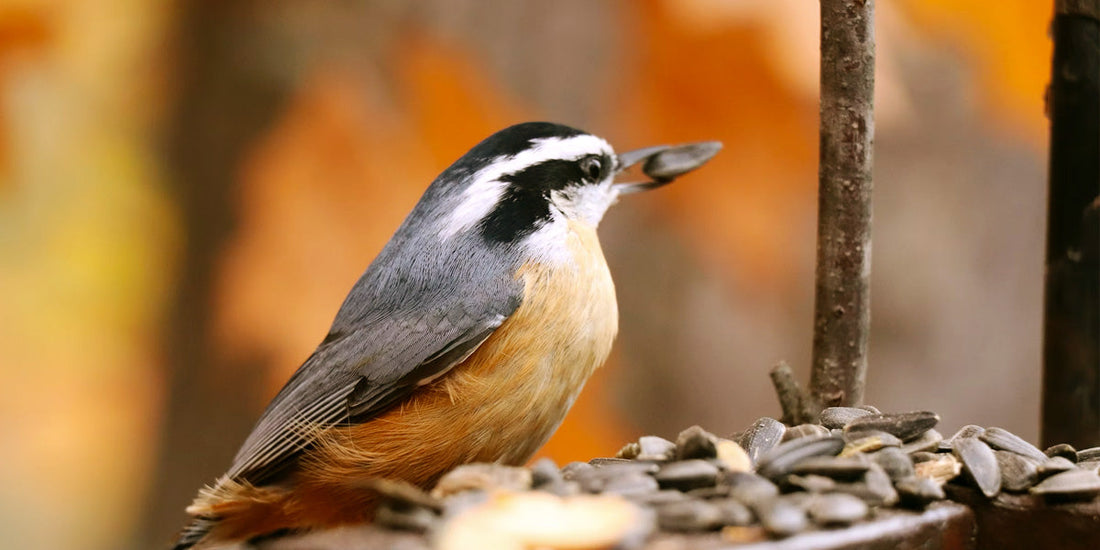
Top 10 Birds You Can Spot This Fall in North America
Share
As the air turns crisp and the leaves start to fall, backyards across North America come alive with color and song. Fall is one of the best seasons to watch birds — migrations are in full swing, and familiar residents show off their vibrant plumage before winter sets in.
Here are ten beautiful birds you can spot this season, whether you’re in the city or the countryside:

Photo by Paul Crook, Mark Olsen.
Northern Cardinal
How to recognize: Bright red plumage on males; females are warm tan with hints of orange and red. Both have a signature crest and black mask around the beak.
Behavior: Often seen in pairs, they sing loud, clear whistles and visit feeders year-round.
American Goldfinch
How to recognize: In fall, their bright summer yellow fades to olive-gold, while the black wings and cap remain. Small, energetic, with a bouncy flight pattern.
Behavior: Prefer nyjer (thistle) and sunflower seeds; often feed in groups.
Dark-eyed Junco
How to recognize: Slate-gray head and back with a white belly — the “tuxedo” bird. Look for their flashing white outer tail feathers when they fly.
Behavior: Ground feeders that appear in backyards just as the first cold fronts arrive

Photo by Jeremy Hynes, Christina Brinza, David Thielen.
Blue Jay
How to recognize: Bold blue feathers with white and black bands, a crest, and a loud “jay-jay” call.
Behavior: Intelligent and vocal; known for caching acorns and peanuts for winter.
White-breasted Nuthatch
How to recognize: Blue-gray back, white face and chest, and black crown. Their habit of moving headfirst down tree trunks makes them easy to spot.
Behavior: Often join mixed flocks with chickadees and woodpeckers in fall.
Downy Woodpecker
How to recognize: Smallest woodpecker in North America; black and white pattern with a tiny red patch on males.
Behavior: Listen for soft tapping on trees or suet feeders — their drumming is lighter than larger woodpeckers.
Photo by Patrice Bouchard, Gary Bendig, Aishwarya MV.
Carolina Chickadee
How to recognize: Black cap and bib, white cheeks, gray wings, and a cheerful “chick-a-dee-dee” call.
Behavior: Curious and brave, often the first to test new feeders and the last to leave.
American Robin
How to recognize: Rusty orange breast, gray back, and a clear, flute-like song.
Behavior: Some migrate south, but many overwinter near berry trees or heated gardens. Look for them foraging on lawns after rain.
Cedar Waxwing
How to recognize: Sleek and silky brown-gray feathers, black eye mask, yellow-tipped tail, and tiny red “wax” dots on wings.
Behavior: Fruit lovers often seen in flocks, feasting on berries or visiting water sources together.
🍂 Tip for birders
Keep your feeder well-stocked with black oil sunflower seeds, suet, and nyjer. Birds need extra calories for migration and the coming chill.
🪶 Smart Bonus
The Pawmendous Chirro Smart Bird Feeder helps you capture these fleeting visits in 2K clarity, so even if you miss them in person, you’ll never miss a moment.
👉 See who’s visiting your backyard this fall — explore with Chirro Smart Bird Feeder.

